For some senior officers and executives of BCC, the presence of BCC in Bangladesh was like coming home. They spent a part of their life and banking career in the Eastern wing of Pakistan before it became independent Bangladesh in 1971.
Bangladesh, the eastern part of Bengal in undivided British India, is bordered by the India to the west, north, northeast, and east, and Myanmar (Burma) to the southeast. The southern part of Bangladesh opens into the Bay of Bengal, the largest bay in the world, entering the Indian Ocean.
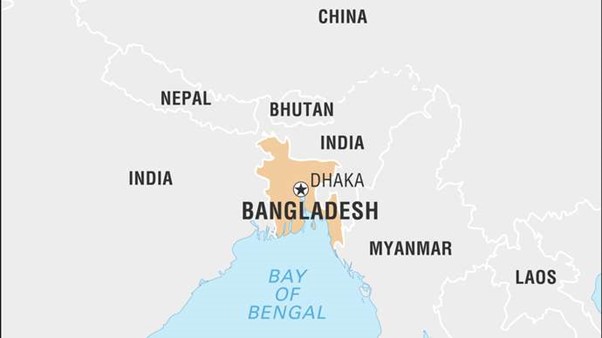
Country information
Bangladesh is predominantly rich fertile flat land due and many rivers flow through the country. Most of the commercial centres are located on the banks of the rivers and the inland river ports handled large traffic flows carrying cargo as well as passengers. The rivers also provided the livelihood of a large fishing community.
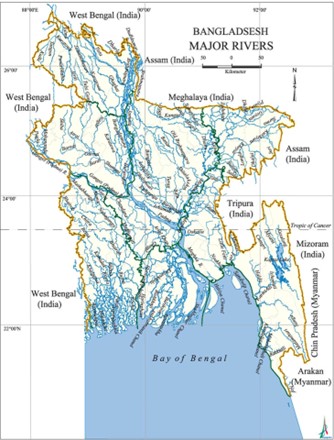
Bengal in eastern India was where the British rule of India began from the 1820s, and the centre of the British administration was situated in Calcutta (now Kolkata) until 1911 when it was transferred to Delhi in northern India.
In Bengal, the British inherited from the Mughals the biggest revenue earnings in the Indian subcontinent. Mughal Bengal reportedly accounted for 12% of the world's GDP and was a major exporter of silk, cotton textiles including muslin, saltpeter, and agricultural produce.
The British plundered Bengal systematically, forcing peasants to cultivate indigo and opium, monopolising the trade in tea and jute grown in Bengal, and imposing high duties on local products like muslin, for the benefit of the British economy.
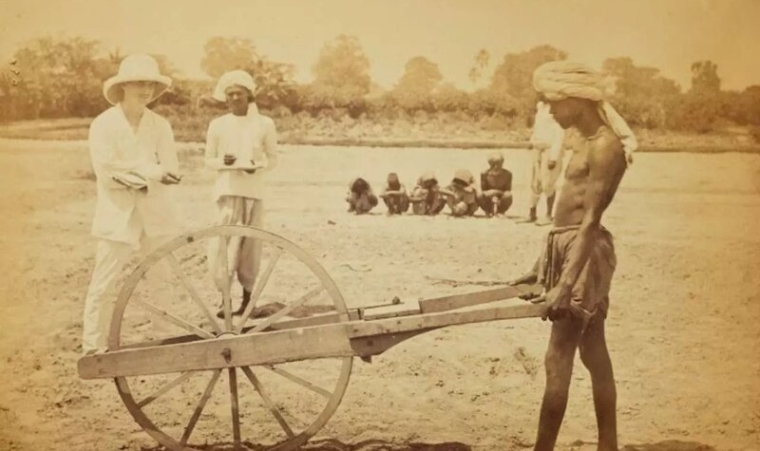

The British colonial rule ended in 1947 when the British unrealistically partitioned India into two countries, India, and Pakistan consisting of two parts, East Pakistan that was eastern part of Bengal (later Bangladesh) and West Pakistan that was western part of Punjab along with other provinces of western India, separated by over 1,000 miles of Indian territory.
 In 1971 East Pakistan, emerged as an independent country of Bangladesh following the Bangladesh Liberation movement, with Dhaka (Dacca) as the capital of Bangladesh.
In 1971 East Pakistan, emerged as an independent country of Bangladesh following the Bangladesh Liberation movement, with Dhaka (Dacca) as the capital of Bangladesh.

In many ways, Bangladesh epitomised the problems and challenges that faced much of the Third World. Since the country became independent in 1971, it struggled against the odds to establish a pattern for development. The problems it faced were, essentially, a high population density and a lack of industrialisation.
Population and language
Bangladesh is one of the most densely populated countries in the world.
In 1976, when BCC entered Bangladesh, the country’s population was around 72 million. In 1991, when the regulators and authorities in the West moved to forcibly shut down BCC, the estimated population was 105 million.
Bengali (Bangla) is the national language of Bangladesh.
English was understood and is still widely used in all communications involving international dealings.
Economy
Bangladesh was largely agricultural, and most of the country’s population continue to rely on farming for their livelihood. The principal agricultural product was jute, and the main industry was jute related manufacture.
.jpg)
Besides jute, the other main crops were rice and tea.
Breeding fish was an important economic activity, mostly in the estuaries of the Bay of Bengal. Bangladesh was a growing exporter of frozen fish and seafood.
The discovery of large reserves of natural gas was changing the picture dramatically - at least so far as the potential for development was concerned.
The country also had substantial coal reserves, with some coal mines still in operation.
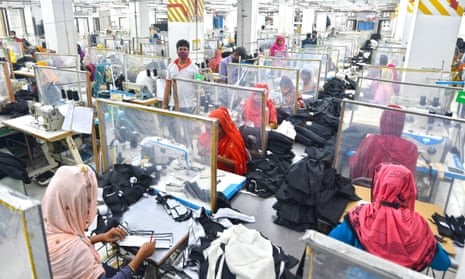
After independence in 1971, Bangladesh increased diversification of its economy with the growth of manufacturing industries. Major export-oriented industries included textiles and shipbuilding.
The home remittances of many Bangladeshi citizens who emigrated to the UK and working the Middle East contribution to foreign exchange earnings.
Bangladesh relied on imports of goods and services to sustain its population and grow its economy. Major imports were cotton, oil, machinery, electronic equipment, vehicles, iron and steel, and plastics.
BCCI in Bangladesh
Bangladesh’s three major cities are Dhaka the capital and financial centre, Chittagong (now Chattogram) the major seaport and trading hub, and Khulna with access to a second seaport.
.jpg)
When BCCI decided in 1976 to establish a banking presence in Bangladesh, there were already several well-established banks, some were state-owned commercial and specialised banks, a growing number of private commercial banks, and the branches of five international banks whose activities included mobilising customer deposits and offering banking products such as loans and financing, credit cards, and cash management: Standard Chartered Bank. Grindlays Bank, HSBC, Citibank and American Express.
BCC’s presence in Bangladesh was because BCC officers and executives had worked in the country when it was formerly East Pakistan. They already had first-hand knowledge of the local markets and long experience in dealing with major business customers.
Mr Agha Hasan Abedi, BCC President was also well-known in Bangladesh and enjoyed a close relationship with the Lt. Gen. H M Ershad, the President of Bangladesh and other high-level contacts in the government from his past association as President of United Bank Limited.
Opening of BCC branches
In mid-1976, Bank of Credit and Commerce International (Overseas) Limited (BCCI), a wholly owned subsidiary in the BCC Group, opened its first branch in the major port city of Chittagong, later known as Chattogram, which was then also the country’s most important trading centre operated by wealthy merchants.
In December 1976, BCCI opened its second branch in Dacca (Dhaka), the country’s capital and emerging centre of commerce and finance.
With the excellent performance of BCCI branches in Chittagong and Dhaka, and contribution to Bangladesh’s growing trade and commerce, the Government of Bangladesh gave permission in December 1977 for BCCI to open a third branch in Khulna, with access to the Port of Chalna-Mongla, the second port of Bangladesh.
Bangladesh operations
Like other banks in Bangladesh, the BCCI branches provided a full range of retail banking and international banking services.
BCCI’s operational strategy was for branches to build and maintain personal relationships individuals, and officials in local businesses, government institutions, foreign companies, and foreign embassies in Bangladesh.
BCCI in Bangladesh was a major banker to the leading traders but also to the country's Petroleum Corporation, which handled bulk oil imports to Bangladesh. It also helped Bangladesh Biman, the national airline, in the syndication of a Euro-Dollar loan to purchase of a Boeing.
In addition to the country's exports and imports, BCC branches in Bangladesh played a useful role in channelling the huge wage earners' remittances into the country from Bangladesh nationals working in Middle East, UK, and Africa.
Branches in Bangladesh
Dhaka
Dhaka is Bangladesh’s most populous city and is one of the largest metropolises in South Asia.
As the country’s capital, and growing as the largest commercial and financial centre, the head office or principal offices of banks, commercial houses, industries, multinationals, and foreign embassies were in Dhaka offering enormous potential for BCCI to claim a share of the banking business in a short period, using the goodwill of BCC officers who worked many years in other banks during East Pakistan, before independence of Bangladesh .
Dhaka was also growing as the most densely industrialised regions in Bangladesh.
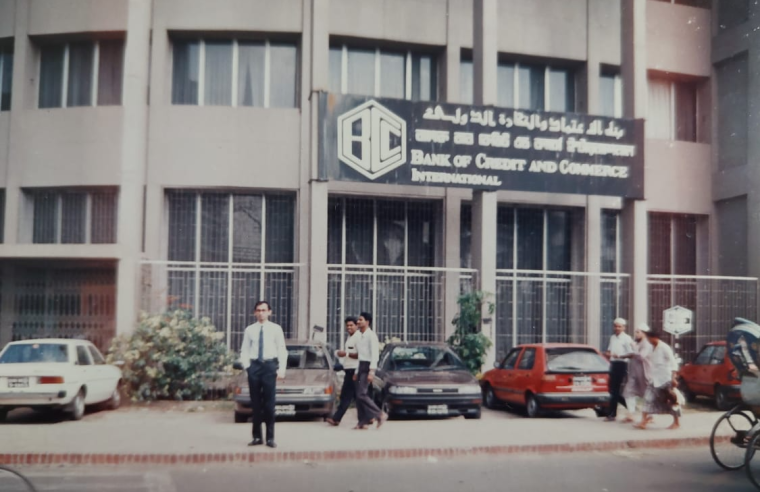
.png)
Mr. Nooruddin Ahmed, Country Manager BCCI Bangladesh, 1976. A senior banker, he was responsible for setting up BCCI operations in Bangladesh.
The Bangladesh government plan to develop Chittagong (Chattogram) as a free trade zone and a new international airport in Dacca opened the possibility that a second free trade zone could be established in Dhaka. It is with this vision and long-term expansion programme that BCC acquired in early this year prestigious premises of 25,000 square feet in the heart of the commercial and banking centre.
The new premises also housed the BCCI Foreign Trade branch in Dhaka that specialised in handling a large volume of external business of Bangladesh and supported the development of the country's economy.
BCCI Dhaka main branch was located at:
Jiban Bima Bhabhan
10 Dilkusha Commercial Area
PO Box 896
Dhaka 2
Telephone: (8802) 236 360/71 - 251 933 - 539 981/83 - 239 380
Cables: BANCRECOM
Telex: 642 482
BCCI BJ - 642 951 - BCCI BJ
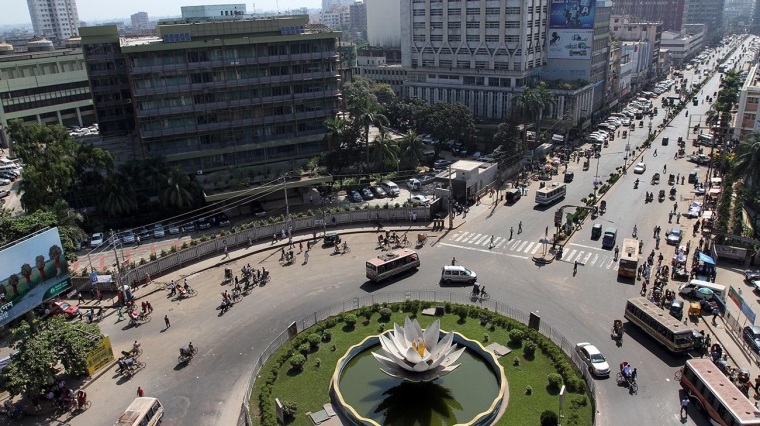
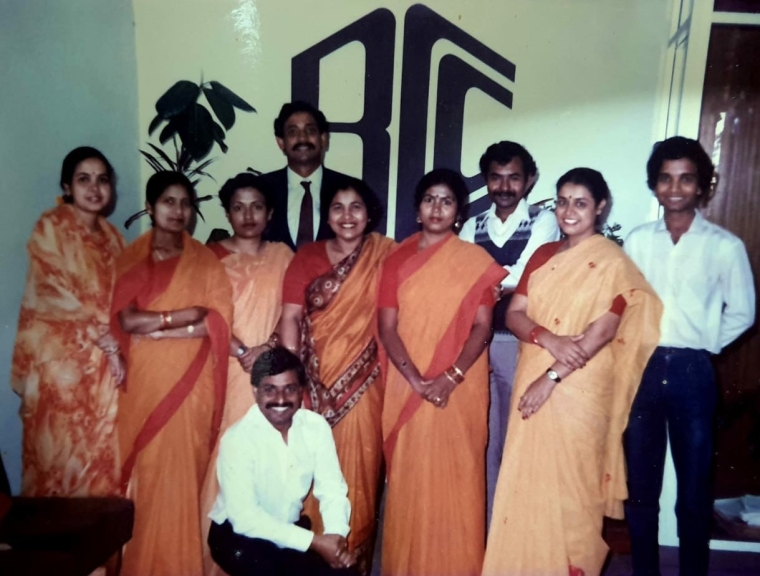
Extension of Dhaka branch
BCCI Dhaka also had booths covering three important areas in Dhaka providing quick access to BCCI Dhaka banking services:
Pan Pacific Sonargaon Hotel: a major hotel and first choice for visiting international business executives and foreign delegates, and hosting conferences.
Gulshan: an affluent residential area incorporating foreign embassies and near readymade garment industries.
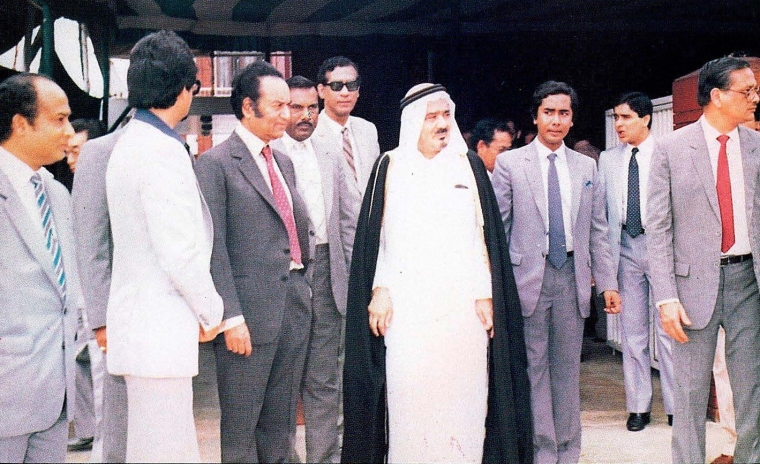
Imamganj (Chawk Bazar): a major centre for local trade and commerce.
.jpg)
Mr Agha Hasan Abedi BCC President along with his assistant Mr Askari Khan, Mr D. H. Rizvi, Regional Manager BCC Far East region, Mr M A Rashid, General Manager Bangladesh, and other BCC senior officers, at the new Foreign Trade branch in Dhaka that specialised in handling large volume of external business in Bangladesh and supported the development of the country's economy, 1986.


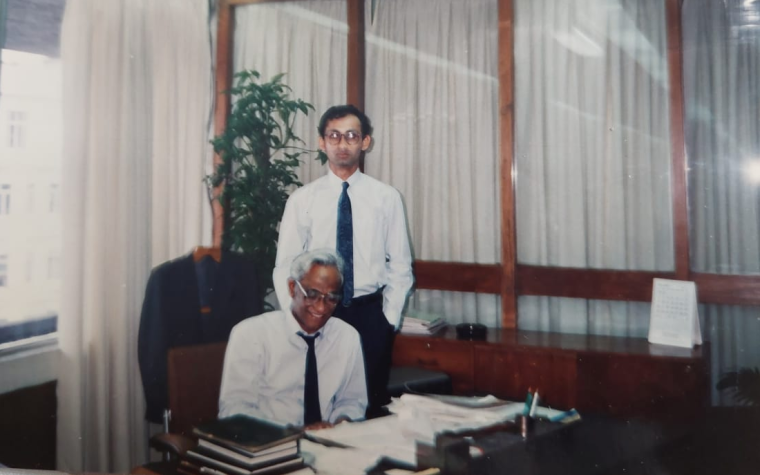
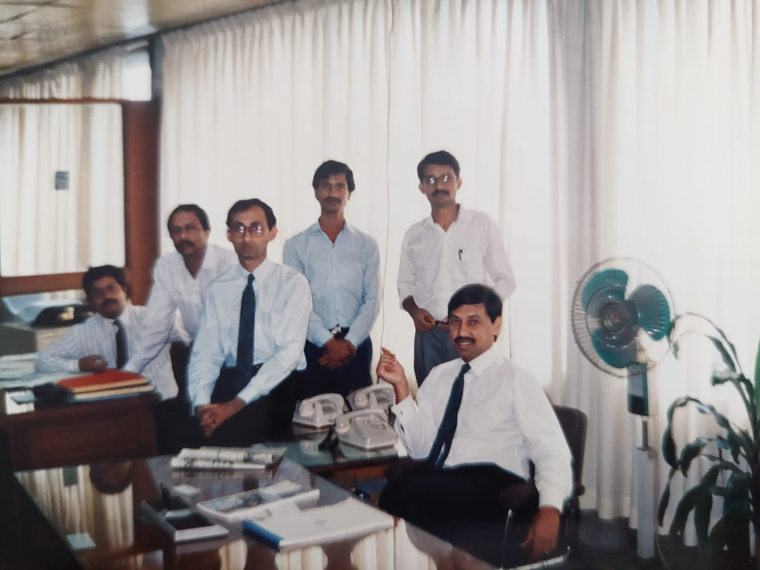
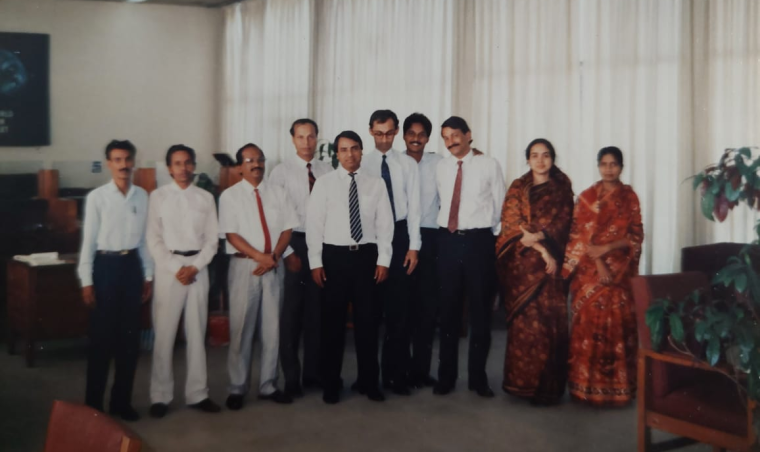
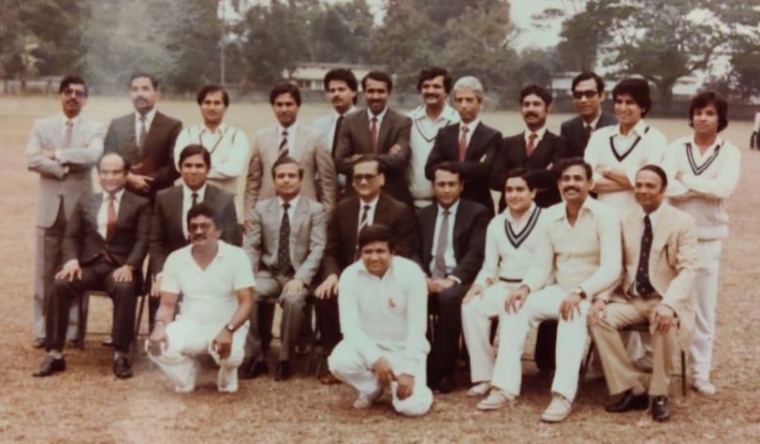

Chittagong (now Chattogram)
Chittagong was the country’s major port and a significant trading centre known as Imamganj. Branch offices of many international firms and banks were in Chittagong.
The country’s only oil refinery was the state-owned Eastern Refinery in Chittagong.
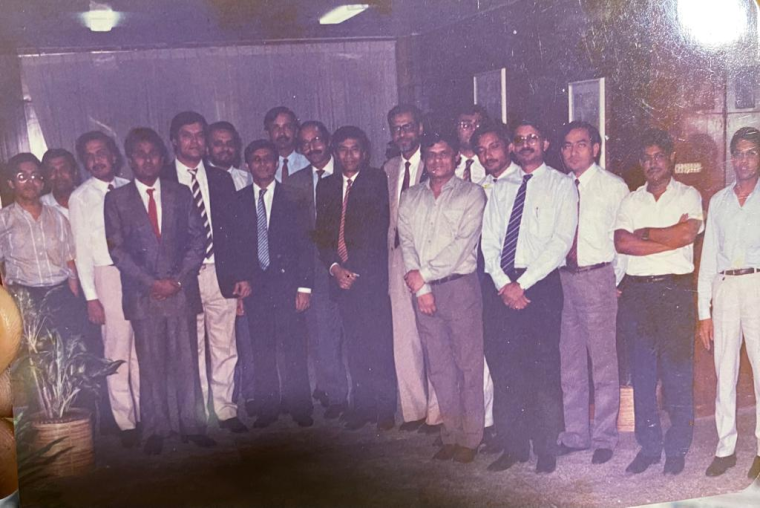
Chittagong branch was located at:
33 Agrabad Commercial Area
PO Box 826
Chittagong
Telephone: (88031) 500 755 / 9 - 225 262 - 500 167 - 502 051/102-3/126
Cables: BANCRECOM
Telex: 66219 - BCCI CG BJ
BCCI Chittagong branch had a banking booth in Khatunganj to facilitate dealings with the large number of wealthy merchant traders concentrated in the area.
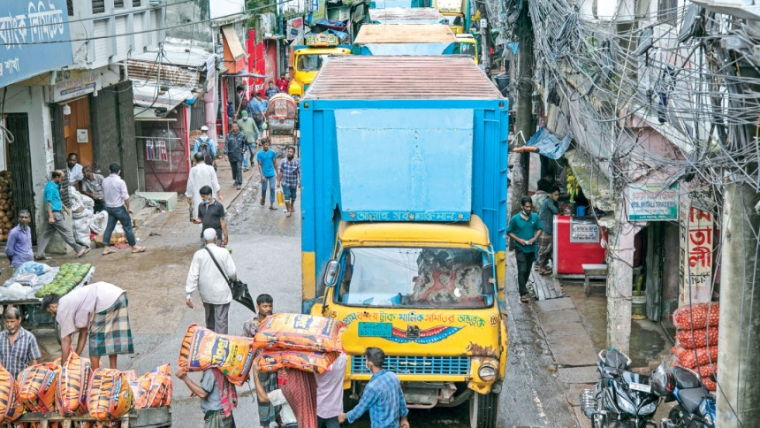
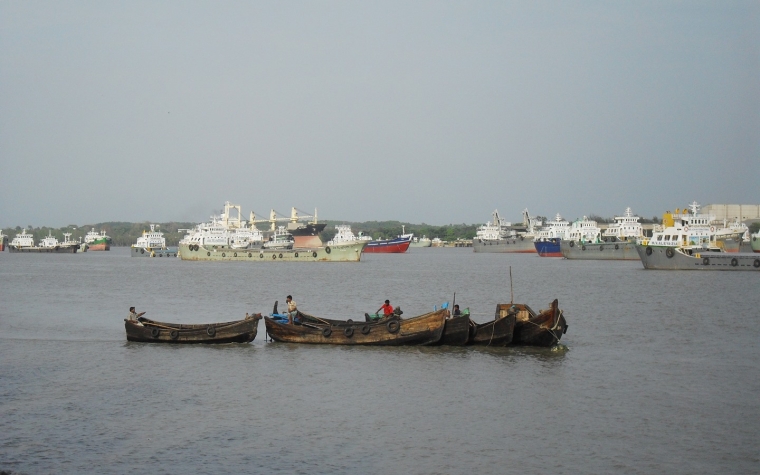

Khulna
Khulna, in the southwest, was an important river port and produce-collection and trade centre connecting important cities to the small port originally known as Chalna Port and renamed as Mongla Port that was being developed to serve as a link sea port as an alternative to Chittagong Port.
A major shipyard was opened at Khulna for repairing and reconstructing ships.
Khulna branch was located at:
5 Old Jessore Road
PO Box 101
Khulna
Telephone: (88041) 217 39 - 21740 - 21069/70
Cables: BANCRECOM
Telex: 27235 - BCC KN BJ
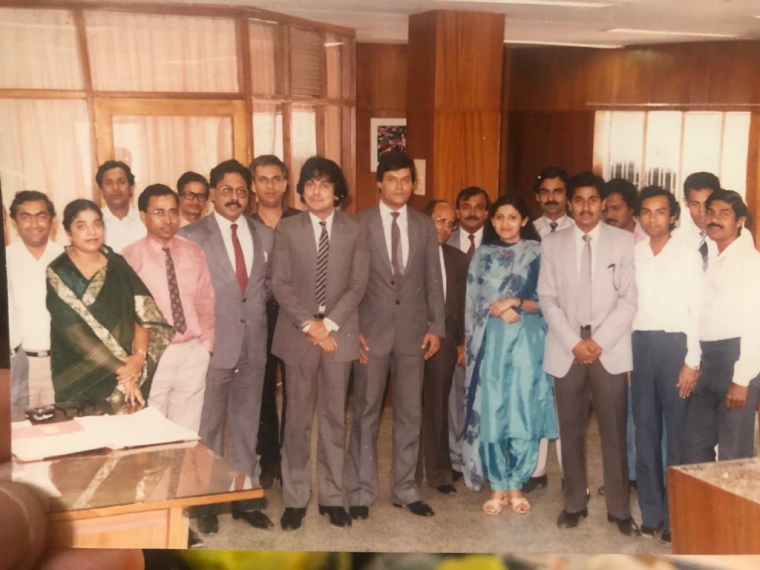

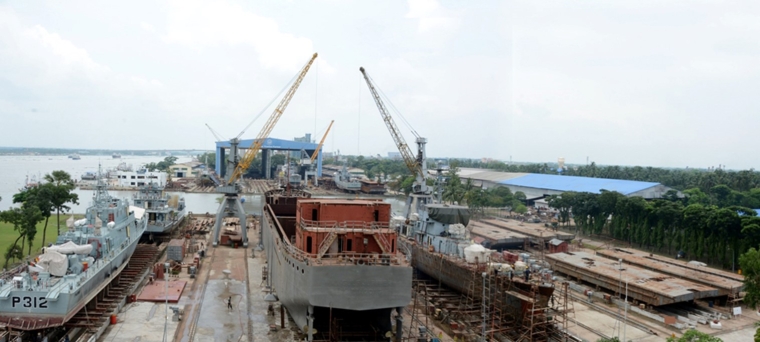
Staff and training
BCC had over 200 staff in Bangladesh, all of whom learnt to work as a team and with a shared vision and joint personality.
BCCI recruited new young officers with graduate, Master’s and MBA degrees, and experienced staff from other banks to manage the bank’s growing operations. Many were provided training and orientation at BCC Regional Training and Development Centres in Karachi (Pakistan), Hong Kong and London (U.K.), and later in Dhaka. Some of the officers went on to work in the International Cadre service of the bank at BCC branches around the world.
The Centre was the second of its kind in BCC Far East region, after Hong Kong, and was needed to accommodate the growing need for trained staff and to provide for their regular training in Bangladesh.
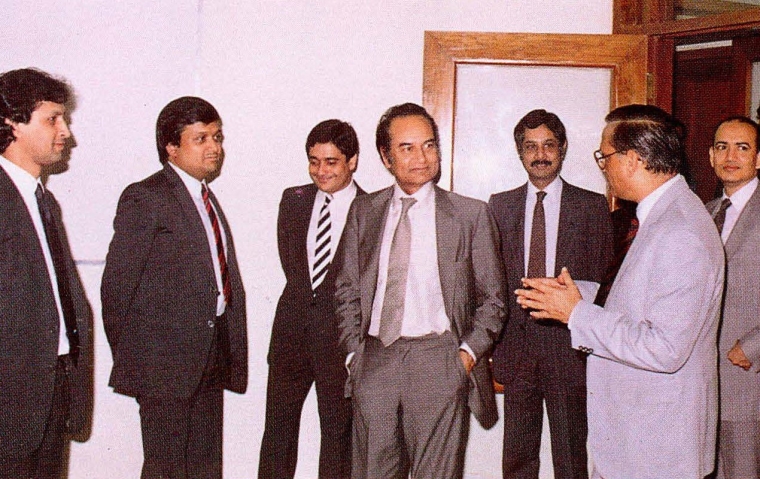
The training centre in Dhaka was the eighth of its kind in the BCC Group, and the second after Hong Kong in the BCC’s Far East region. As well as training and development, the Dhaka centre carried out research and market surveys.
Visiting senior executives from BCC Central Office in London, as well as different BCC Regional Offices visiting Dhaka were invited to address the trainees and shared their thoughts and experiences, on the emerging culture of the bank.
Research and market surveys were necessary to develop BCCI Bangladesh to expand the size of its business and focus on important local and international corporate clients. The country’s exports of jute and jute products, tea, leather, handicrafts, and non-traditional items, like shrimps and other fish, processed foods and garments were growing in response to the government’s new concessional export financing programmes as well as to strong foreign demand for traditional exports. Export-orientated labour-intensive industries such as the garment trade, cement facilities, electronic assembly plant, ship-breaking, ship-building facilities, shrimp and frog-legs processing and freezing plants were some of the foreign interests’ projects.
BCC President visit to Bangladesh in 1984
Mr Agha Hasan Abedi, BCC President, visited Bangladesh in May 1984 when he called on Lt.-Gen. H. M, Ershad, President of Bangladesh, the Governor of Bangladesh Bank, cabinet ministers and Government officials, in the country's capital Dhaka.
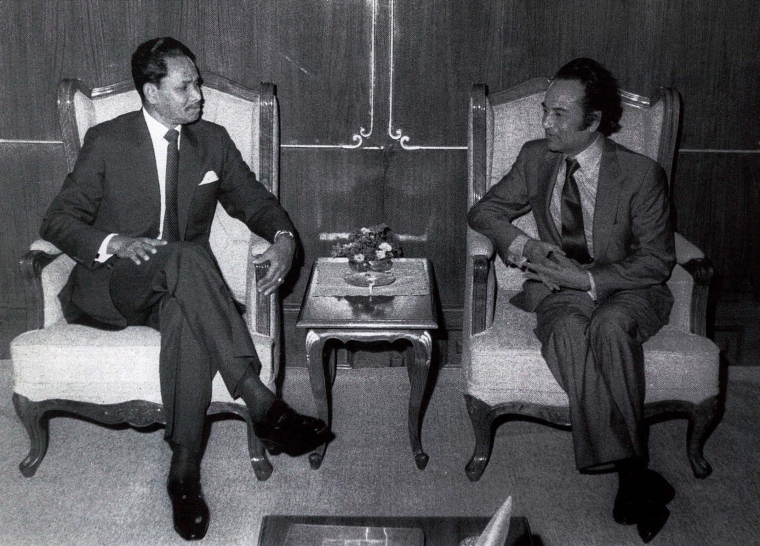
.jpg)
At a special banquet held for Mr Abedi by the Bangladesh Bankers' Association, the Convenor spoke of BCC's eagerness 'to make banking a service industry not only in name but in reality'. He went on to say that, as a result of BCC's success, 'bankers in Pakistan, Bangladesh and India have now discovered their hidden potential and become aware of what they are capable of doing and of the heights they are able to reach in international banking'.
BCC President’s address to BCCI family members in Bangladesh
During Mr Abedi’s visit in May 1984 he addressed a conference in Dhaka attended by BCCI family in Bangladesh to inspire them and share his views on key aspects of BCC’s value system that incorporated among others the quality of human resources, the importance of humility, discovering oneself, hope and inspiration and giving.
Mr Abedi emphasised to all that marketing was the most important responsibility of everyone, not only of those who were assigned to it. It was a role that every member of BCC had to perform for the bank to grow.
International Diplomacy
In 1984 BCCI extended assistance to at least three international gatherings held in Dhaka, capital of Bangladesh.
The first was a meeting of governors, deputy governors and other officials of central banks from South East Asia, New Zealand and Australia.
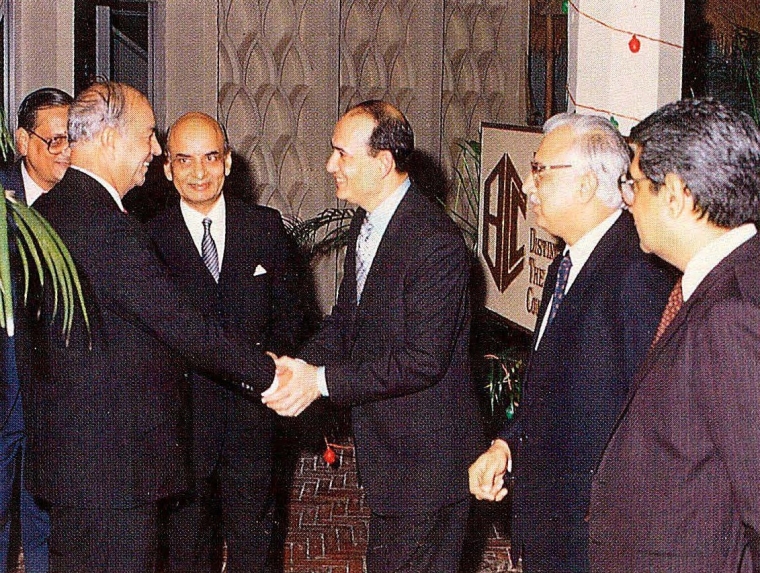
The second was the launch of the South Asia Association for Regional Cooperation. Heads of State and government ministers representing Bangladesh, Bhutan, India, the Maldives, Nepal, Pakistan and Sri Lanka attended this conference. BCCI officers provided all possible for both conferences to help ensure the success of these important meetings and ensure a greater recognition BCCI’s banking services among the distinguished delegates.
The third was the 14th Islamic Conference of Foreign Ministers convened in Dhaka, from 6 to 11 December 1983. The following Members countries participated in the Conference, in addition to from Bangladesh: Algeria, Bahrain, Benin, Cameroon, Chad, Comoro, Gabon, Gambia, Indonesia, Iraq, Jordan, Djibouti, Lebanon, Libya, Malaysia, Maldives, Mali, Mauritania, Morocco, Niger, Oman, Pakistan, Palestine state, Qatar, Saudi Arabia, Senegal, Sierra Leone, Somalia, Sudan, Syria, Tunisia, Turkey, Uganda, United Arab Emirates, Upper Volta, Yemen Arab Republic and People’s Democratic Republic of Yemen.
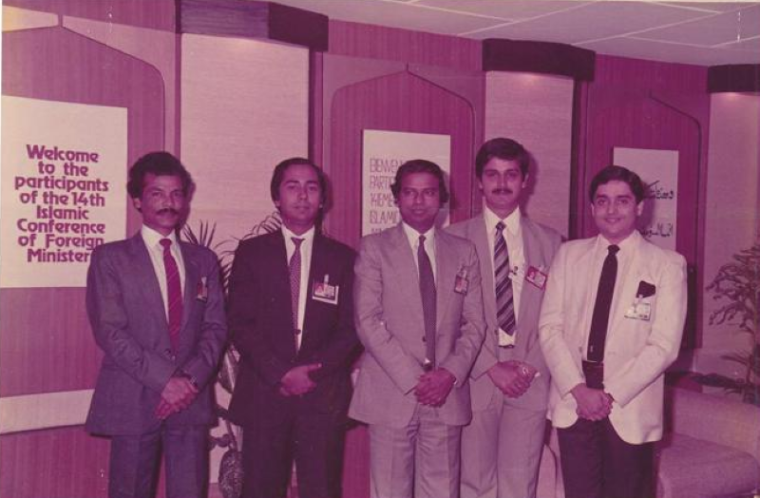
Charitable activities
BCCI Bangladesh regularly contributed funds to alleviate the suffering of flood victims.

BCCI Foundation Bangladesh
Over time, BCC set up a BCCI Foundation in Bangladesh to serve a larger purpose that included scholarships for the needy, rural health care centres and school libraries across Bangladesh.
- Deed of Bangladesh BCCI Foundation- draft.
All BCCI profits were retained in the country and transferred to the foundation.
.png) Bank of Small Industries and Commerce Bangladesh
Bank of Small Industries and Commerce Bangladesh
In a pioneering move BCC established a new financial institution with the government of Bangladesh with BCCI Foundation in Bangladesh as majority shareholder. Known as the Bank of Small Industries and Commerce Bangladesh Ltd (BASIC), the objective was to help Bangladesh achieve its development goals and benefit the underprivileged community.
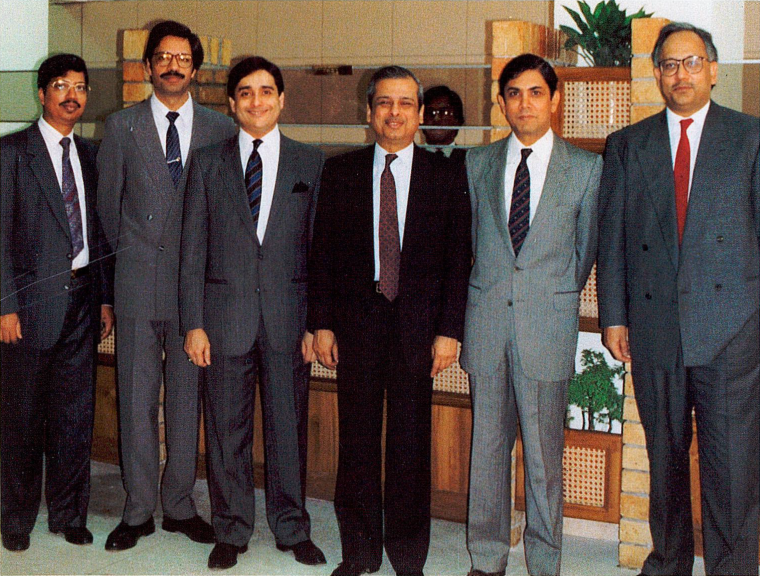
According to Mr M A Rashid, General Manager BCCI Bangladesh, and a director in BASIC, the joint venture was the realisation of BCC's long cherished dream to improve the quality of life in Bangladesh.
BCC President visit to Bangladesh with Mr Jimmy Carter, former US President, in 1987
In 1987 Mr Jimmy Carter, former US President, accompanied by his wife and Mr Agha Hasan Abedi, BCC President, visited Bangladesh as part of the world tour that also took them to India, Pakistan and many parts of Africa where Global 2000 was working on health and agriculture projects.
Global 2000 is a foundation created by Mr Jimmy Carter, former US President and his wife, Mrs Rosalynn Carter, and BCC contributed funds for its endeavours to improve health.
At a workshop conducted by Global 2000 on the 'Alleviation of Poverty and Starvation and Improvement of Health-Prerequisites for Peace', from 30 June to 2 July 1986 in Geneva, Switzerland, to which Mr M A Rashid, General Manager BCCI Bangladesh was invited, Mr Carter had announced plans to launch two integrated health care projects in Bangladesh, with emphasis on eradication of contagious diseases, child immunisation, health and agriculture.
A joint venture by Global 2000 and BCCI Foundation Bangladesh was to be created for the two projects initially with scope to areas of cooperation in future. BCCI Foundation would provide the fund requirement and Global 2000 the technical expertise.
The Bangladesh Government had already selected two Upazillas, to be called Global 2000 Districts, in which projects would be implemented. Designed to improve the quality of life in less-developed areas, the projects aim was to alleviate hunger, improve health and nutrition services, gear up family planning efforts, increase availability of agricultural inputs and expand facilities of general and technical education for the creation of employment opportunities.
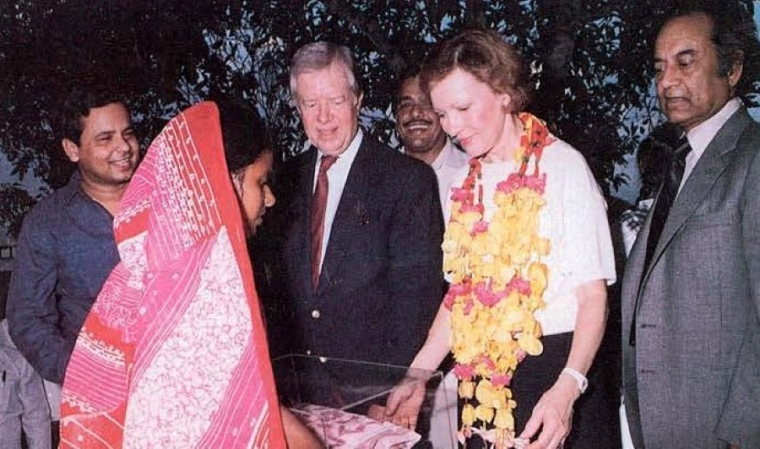
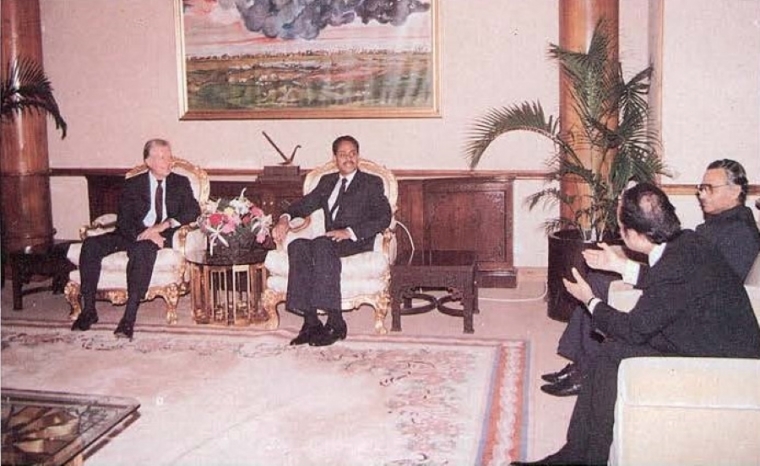
The Memorandum of Understanding was signed by Mr M. A. Rashid, General Manager of BCCI Bangladesh and Director/Treasurer BCCI Foundation, and Mr M. K. Anwar, Secretary, External Resources Division, Government of Bangladesh. Mr Carter, Bangladesh President H.M. Ershad and Mr Abedi graced the signing ceremony.
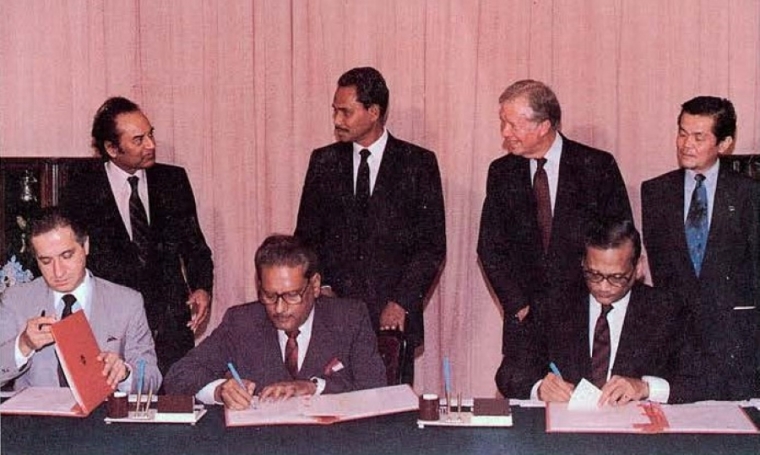
During the visit in 1987, Mr Jimmy Carter and Mr Agha Hasan Abedi had meetings with the President of Bangladesh, Lt. Gen. H. M. Ershad, and senior government officials to initial the Memorandum of Understanding between the Bangladesh Government, Global 2000 and the BCCI Foundation for the launching of a joint project on health and agriculture in Bangladesh.
BCCI closure
On 5 July 1991 the Bank of England and other regulators in the west decided to abruptly freeze BCCI Group's assets and shut down BCCI's operating branches worldwide.
The priority of the governments and central banks in some countries was to protect their people and the local operations of BCCI continued in a different name after the assets and liabilities were acquired by private investors or another bank or the government.
The Bangladesh Bank (central bank) and the Ministry of Finance intervened to protect the local depositors at BCCI branches in Bangladesh. A new bank was established in the name of Eastern Bank Limited, incorporated on 8 August 1992, and took over the assets and liabilities along with around 400 staff of BCCI in Bangladesh.
The shareholders of Eastern Bank Limited were the Bangladesh government (20%), state-owned financial institutions (40%) and BCCI's depositors who were offered shares in lieu of their deposits (40%).
The new bank commenced banking operation on 16 August 1992 and declared a first dividend for the year 1997.
The BCCI Group majority shareholders considered the abrupt action by western central banks to shut down BCCI in 1991 was unjustified when they already had detailed discussions with the Bank of England and other regulators on a restructuring plan and would have injected further capital, if required.
In a 24-page report not made public but sent to some 60 central bankers worldwide, the United Nations Center on Transnational Corporations said that by simply shutting down the 70-nation banking network that financed international trade of $18 billion a year, the economic damage fell hardest on countries like Nigeria, Bangladesh and Zambia, where B.C.C.I. was an important institution. (New York Times, Feb 5, 1992)
